All About Colston Bassett Blue Stilton Cheese
Colton Bassett blue stilton cheese, a renowned British cheese, is a testament to its rich history and distinctive flavor. Produced in the heart of Nottinghamshire, England, this blue-veined cheese has been crafted by Colston Bassett Dairy since 1913, adhering to traditional methods that emphasize quality and authenticity.
As one of only six dairies licensed to produce Stilton, Colston Bassett prides itself on using locally sourced milk from nearby farms, ensuring a unique and consistent taste. The cheese is aged for about 12 weeks, developing its characteristic creamy texture and tangy, yet balanced, blue mold marbling.
With its Protected Designation of Origin (PDO) status, Colston Bassett Blue Stilton is a culinary delight and a symbol of British heritage and craftsmanship, making it a favorite among cheese connoisseurs worldwide.
History
The history of Colston Bassett blue stilton cheese is deeply rooted in the long-standing traditions of English cheesemaking. Established in 1913, Colston Bassett Dairy was founded in Colston Bassett in Nottinghamshire. The dairy was created by a group of local farmers who sought to collectively produce and market their milk, initially turning to cheese production to add value to their dairy output.
Stilton cheese dates back to the early 18th century and is named after the village of Stilton in Cambridgeshire, although it was never made there. Instead, it was produced in Leicestershire, Nottinghamshire, and Derbyshire counties. Colston Bassett quickly became renowned for its high-quality Blue Stilton, thanks to its commitment to traditional methods and high standards.
Throughout its history, Colston Bassett has maintained a dedication to artisanal practices. The dairy uses milk from local herds and carefully monitors cheesemaking to ensure consistency and quality. This includes hand-ladling the curds and allowing the cheese to mature for around 12 weeks to develop its distinctive flavor and creamy texture.
Today, Colston Bassett Blue Stilton remains one of the most respected names in cheese, enjoying a reputation for excellence in the UK and internationally. The dairy’s commitment to tradition and quality has earned it numerous awards and a loyal following among cheese enthusiasts, a testament to the global recognition of British cheese heritage.
King of English Cheeses
Blue Stilton, also called the King of English cheeses, is one of the most spectacular cheeses to come out of England and is the only English cheese that enjoys trademark protection. Only five dairies are located in three counties licensed to produce Blue Stilton. They include:
- Colston Bassett Dairy
- Cropwell Bishop
- Long Clawson Dairy
- Tuxford & Tebbutt Creamery
- Websters
Sonnet
It is such a fantastic cheese that it even inspired a sonnet!
Sonnet to a Stilton Cheese
Stilton, thou shouldst be living at this hour
And so thou art. Nor losest grace thereby;
England has need of thee, and so have I –
She is a Fen. Far as the eye can scour,
League after grassy league from Lincoln tower
To Stilton in the fields, she is a Fen.
Yet this high cheese, by choice of fenland men,
Like a tall green volcano rose in power.
Plain living and long drinking are no more,
And pure religion reading “Household Words”,
And sturdy manhood sitting still all day
Shrink, like this cheese that crumbles to its core;
While my digestion, like the House of Lords,
The heaviest burdens on herself doth lay.
–G. K. Chesterton
The Short of It
- Type: cow’s milk
- Origin: Nottinghamshire, England
- Process: Blue mold, Penicillium roqueforti, is introduced at the outset; new cheese is drained, salted, molded, and drained some more. It is pierced after four to six weeks of aging to allow the mold to grow. Cheese is mature and ready for sale approximately ten weeks after starting the process.
- Texture: unpressed, semi-firm blue
- Shape: cylindrical
- Color: pale straw with delicate bluish-gray veining
- Rind: rubbed, thin, mottled orange
- Flavor: buttery, salty, rich and creamy, pungent and peppery veining
The Rest of the Story
Colton Bassett blue stilton cheese is distinguished by several notable characteristics that set it apart from other blue cheeses:
- Texture: It has a creamy, smooth texture that is rich and luxurious, making it easy to spread and enjoy. The consistency is more supple than other Stiltons, due to the careful hand-ladling process used in its production.
- Flavor: The flavor profile is complex, combining a rich, buttery taste with tangy, savory notes. It has a well-balanced saltiness and a subtle nutty undertone, complemented by the blue mold’s distinctive sharpness.
- Appearance: The cheese features a natural, crumbly rind and a pale yellow interior generously marbled with blue veins. The blue mold is evenly distributed, creating an attractive and appetizing visual.
- Aroma: It emits a strong, earthy aroma with hints of mushrooms and a mild tanginess, which is inviting without being overpowering.
- Maturation: Aged for approximately 12 weeks, the cheese develops its characteristic depth of flavor and creamy texture.
- Milk Source: Made from locally sourced cow’s milk, contributing to its unique and consistent flavor profile. The milk is collected from farms within a close radius to ensure freshness and quality.
- Protected Designation of Origin (PDO): Colston Bassett Blue Stilton holds PDO status, ensuring it meets strict production standards and is made traditionally within the designated regions of Leicestershire, Nottinghamshire, and Derbyshire.
These characteristics make Colston Bassett Blue Stilton a celebrated and highly regarded cheese among connoisseurs and everyday cheese lovers.
What’s the difference between Stilton cheese and blue cheese?
Blue cheeses are produced worldwide using many different types of milk. For instance, Gorgonzola is a blue cheese made in Italy from sheep’s milk. All blue cheeses rely on the mold Penicillium roqueforti for their characteristic bluish-gray veins and sharp flavor.
Much like Champagne, a sparkling wine made in the Champagne district of France, Stilton is a particular type of blue cheese only licensed to be made in three shires (counties) in England: Nottinghamshire, Derbyshire, and Leicestershire.
Interestingly, Stilton is not licensed to be made in Stilton, the town for which it is named, because Stilton is not in one of those three shires.
The natural question, then, is why it is called Stilton. While the town of Stilton produced a type of cheese (possibly blue), in the mid-1700s, innkeeper Cooper Thornhill of The Bell Inn in Stilton began “importing” this cheese from the surrounding counties.
Over time, Stilton production was localized in Nottinghamshire, Derbyshire, and Leicestershire, while Stilton was sold and exported primarily from the town of Stilton itself.
To read more about the history of Stilton, click here.
What Helps Make Stilton Stilton?
Of all the well-known varieties of blue cheese, Stilton has the lowest water content, the lowest salt content, and the highest fat and protein content. This means that it is the richest and creamiest, which might be one of the reasons that I like it so much.
Making Stilton Cheese
To make Stilton, cows’ milk is pasteurized and cooled to 86°F (30°C). One 17-lb Stilton cheese requires 17 gallons of milk. The cheese is then mixed with rennet and the Penicillium roqueforti mold.
Once the curd forms, it is sliced vertically and horizontally into long, thin pieces, like julienne cuts. The curds are then milled, drained, and salted by hand.
Once thoroughly mixed, the curds are placed in cheese molds or hoops. The curds continue to drain, and the hoops are turned once daily to ensure even whey drainage.
After five days, the cheese makers remove the hoops and smooth the outside of the cheese with regular kitchen knives. The smoothing step makes the outside of the cheese look more finished and seals it so no air can get inside.
This is important because the cheese is then aged for four to six weeks before being pierced with long stainless steel needles.
Piercing introduces air to the cheese’s interior, allowing the mold to grow. While some blue cheeses let the mold begin growing at the beginning of the cheese-making process, the makers of Stilton want the cheese to mature for a certain amount of time before the mold begins to grow, hence the smoothing of the cheese.
The piercing step is repeated a week later, and then the cheese is allowed to ripen a further three weeks before being graded and passed for sale.
Characteristics
Colston Bassett Stilton chesse has a brownish rind that can be dry and rough. The interior paste has an ivory color with its trademarked greenish-blue veins. It has a strong smell; some may call it a stinky cheese, but I call that a compliment. It also has a strong taste that I love, but the kids wouldn’t touch it.
According to Steven Jenkins, one of the most knowledgeable cheesemongers in America who wrote Cheese Primer about Stilton, “The flavor of a great Stilton cheese is full, rich, and creamy, as complex as any other great blue.
It reveals layers and folds of honey, leather, tobacco, and molasses flavors.
Doesn’t that make you want to go out and buy some and taste for yourself?
White Stilton
At the Colston Bassett Dairy, one of only five dairies licensed to produce Stilton cheese, they also make a white Stilton. This cheese is made precisely like blue Stilton, but it isn’t pierced so the mold doesn’t grow.
White Stilton is mild and creamy. It is often mixed with fruits and honey to make seasonal dessert cheeses, usually around Christmastime. Like its more well-known sibling, white Stilton has a Protected Designation of Origin and can only be produced in the same six dairies licensed to produce blue Stilton.
Serving Stilton
Like most really excellent cheeses, Stilton should not be used in cooking. It pairs nicely with crisp apples and is often served with luscious port or sherry. As mentioned above, I like to serve this cheese on a fresh French or Italian baguette for breakfast.
The other day I was making cheese quesadillas for my girls using a generic American cheese but decided to make one for myself with a little Stilton Blue. It was fantastic and took quesadillas to a whole other level for me.
I could also see cutting a thin slice, topping a grilled steak, or using it in one of my demi-based brown sauces. I said it shouldn’t be used for cooking, but why not if it’s in the refrigerator?
Buying Stilton
I hope to talk about many great blue cheeses on the market, but if you can find a Colton Bassett blue stilton cheese or one of the other name-protected dairy versions, try it and let me know what you think. Stilton is not cheap.
I think I paid around $28 per pound for it, so I purchased about 1/3 of a pound, but this is strong stuff, so a little goes a long way.
And be sure to buy Stilton from reputable cheese shops that know how to handle and sell much of it. You don’t want to spend that kind of money expecting an incredible cheese only to be disappointed because the cheese purveyor didn’t know what they were doing.
As I always suggest, ask for a taste. If you don’t get it, buy your cheese somewhere else.

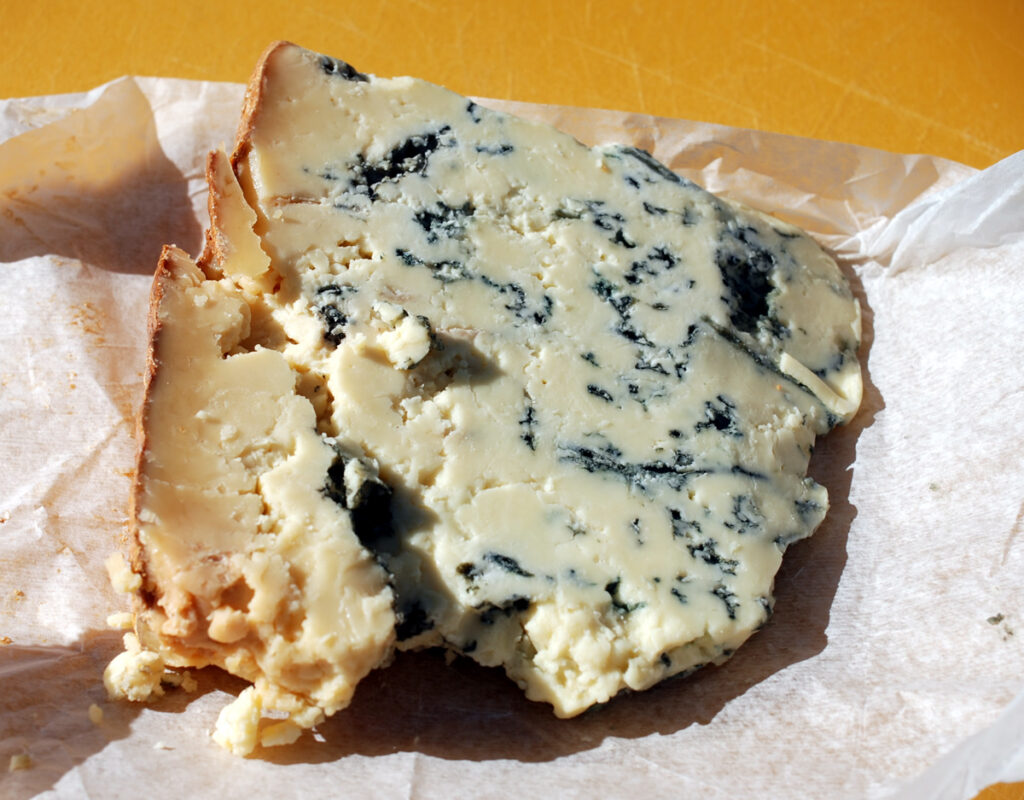





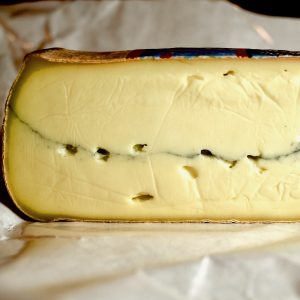
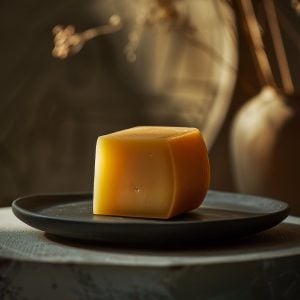
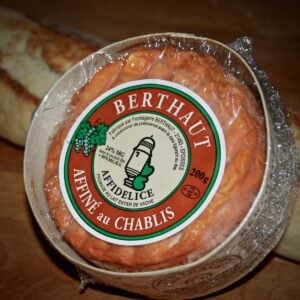
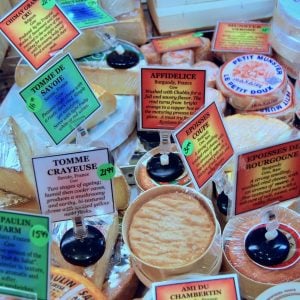
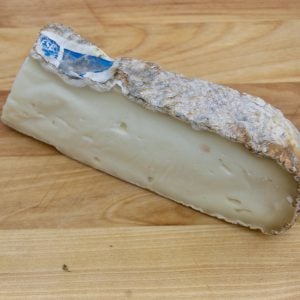
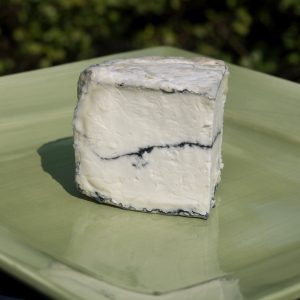
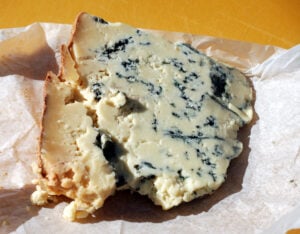


5 Responses
Origin seems to point in the direction of Leicestershire
Can genuine blue Stilton be frozen to prolong the storage time for a short time?
Brian, according to the Stilton Cheese web site, “For longer storage, Stilton freezes beautifully. Cut into handy portion sizes of 150 grams (6 ozs) wrap in cling film or foil and keep for up to 3 months. Defrost in the fridge or a cool larder for about 24 hours before use – slow defrosting is essential to stop the cheese becoming too crumbly. Once defrosted use as normal but eat within a week and do not re-freeze.
Why do I hate blue cheese (roquefort and Danish) but love stilton.
It is misleading to say blue cheese when talking about stilton ( I realise it is a blue cheese)
You say not to use it in cooking but here in UK, it’s home country, it makes a delicious sauce to accompany steaks, pork or chicken. I also love it as the sauce in a pasta dish with chicken, broccoli, leek and pancetta. Delicious!